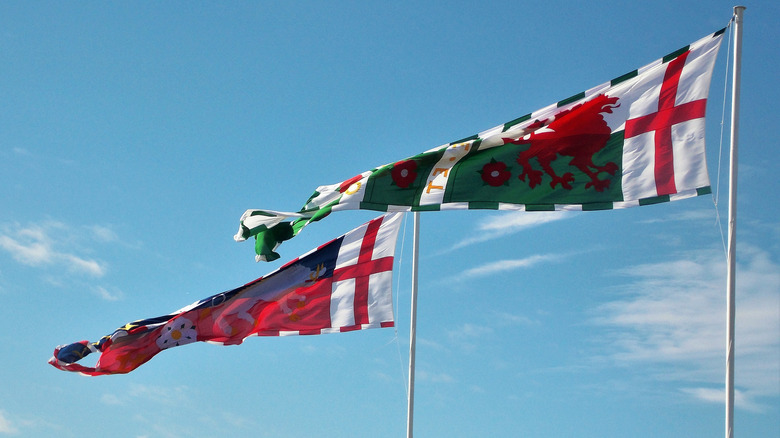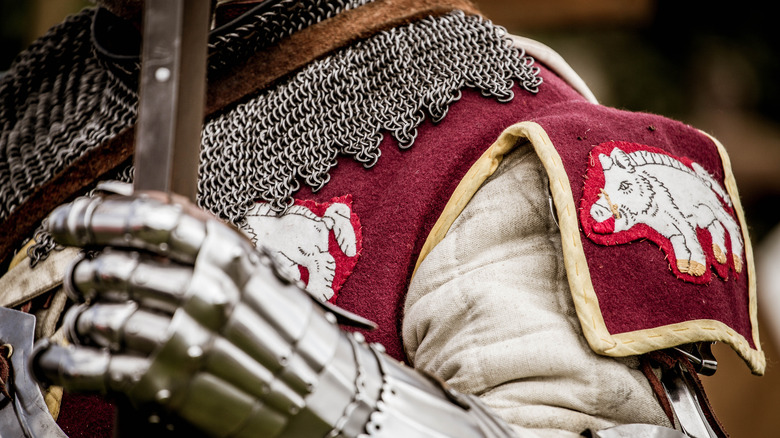How Discovered Treasure Changed What We Know About The Battle Of Bosworth
From time to time, an archaeological discovery is made that alters what was previously known about a historical event. Such was the case with the discovery of a small boar-shaped badge found near the site of the Battle of Bosworth, part of the famous War of the Roses that saw two warring factions vying for the English throne back in the 15th century.
The badge is a mere 1.15 inches (29 millimeters) and made of silver-gilt, which is silver gilded with gold (via BBC). The boar was a symbol used by King Richard III — a member of the House of York — throughout his life, and it's believed that the badge would've belonged to someone from his personal household (via The British Museum).
Until recently, King Richard III was regarded as one of England's worst kings, but that reputation has since been chalked up to the work of his enemies over the years, and historians now see him in a more balanced light (via Britannica). He was killed at the Battle of Bosworth (sometimes referred to as the Battle of Bosworth Field), which was effectively the last battle of the 30-year War of the Roses, at which point Henry VII took the throne and established the Tudor dynasty (via Britannica).
How the boar badge indicated where the Battle of Bosworth actually took place
The discovery of that small badge had big implications on what historians thought they knew about the Battle of Bosworth and where it truly took place. It's believed that one of King Richard III's supporters dropped the badge into the mud during the battle over 500 years ago. The curator at Leicestershire County Council's Bosworth Battlefield museum, Richard Knox, told the BBC that "It was found within a scatter of late medieval items, thought to have been struck from the struggling combatants during hand-to-hand fighting."
The boar badge was officially named a treasure under the United Kingdom's Treasure Act of 1996, which requires that an artifact be made of metal and at least 300 years old (via BBC). Even more, it completely altered where the Battle of Bosworth took place. The discovery of the badge moved the epicenter of the battlefield about two miles from Bosworth Battlefield museum (via BBC). This places the sight of the battle on private farmland near Upton, Leicestershire.

